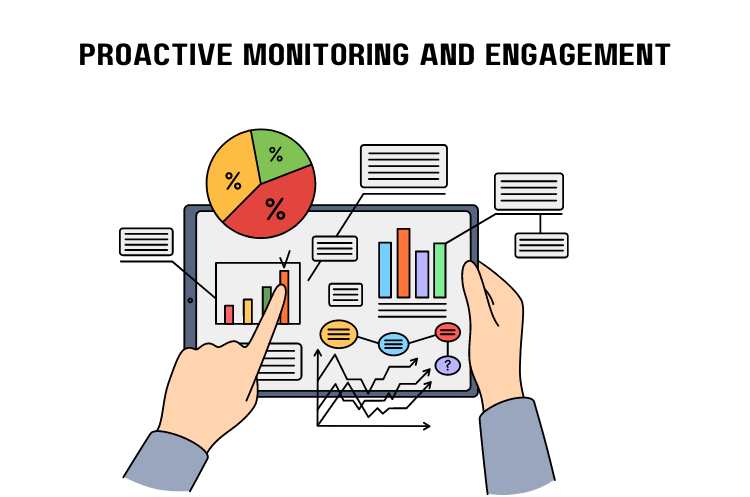Rising Above the Norm: 3 Proven Techniques for Effective Brand Reputation Management
In today’s digital world, where fleeting validation and algorithmic trends offer only temporary shields for your brand’s true online status, it’s crucial to go beyond the surface level. True influence and lasting perception require a deeper understanding and proactive management of your brand’s Reputation Management.
Brand reputation management is a sophisticated art, recognized by those who understand that influence and perception are fundamental to business significance. This principle is reinforced by the renowned work of Dr. Robert B. Cialdini in his book “Influence: The Science of Persuasion.”
To truly shine the spotlight on your brand, you must employ strategies that transcend mere popularity metrics, fostering loyalty and resilience. In this discourse, we unveil three expert techniques for robust brand reputation management that go beyond the pursuit of likes and shares, propelling your business forward.
Understanding Brand Reputation Management
Brand reputation management involves monitoring and shaping how your brand is perceived by your target audience and the broader public. It encompasses a range of tactics, three of which we’ll explore below. These strategies, derived from years of experience and research on leading global brands, are poised to enhance your brand’s standing in the digital domain.
- Consistent Identity and Brand Messaging
- Define Brand Values and Personality:
Establishing a positive brand reputation begins with defining your company’s identity and values. These values are the guiding principles behind every decision your company makes. They represent what your brand stands for and resonate with your audience.
Take time to reflect on your company’s core beliefs. Is it about innovation, sustainability, or exceptional customer service? Ensure these values align with your audience’s beliefs to create a deeper connection.
- Establish Brand Guidelines:
Crafting clear brand guidelines for visual elements such as logos, colors, and typography is crucial for creating a cohesive and recognizable brand identity. Consistent use of these visual elements across platforms fosters familiarity and trust with your audience.
- Integrate Messaging Across Channels:
Harmonizing brand messaging across different marketing channels reinforces your brand identity. Whether through advertisements, social media interactions, or customer support, consistent messaging builds credibility and trust, laying the foundation for effective brand reputation management.
- Proactive Monitoring and Engagement
- Implement Social Listening Strategies:

Using tools like Google Alerts allows brands to monitor conversations and discussions about their brand online. This insight helps brands respond promptly to customer feedback and engage meaningfully with their audience.
- Respond Promptly and Engage:
Timely responses to customer feedback, coupled with personalized engagement, foster strong customer relationships. Encouraging feedback and dialogue further enhances brand trust and affinity.
- Gather Reviews, Insights, and Make Improvements:
Regularly analyzing customer feedback enables brands to improve products and services continuously. By listening to their audience, brands can refine their offerings and enhance overall customer experiences.
- Crisis Management and Communication
- Prepare a Crisis Management Plan:
Anticipating and addressing potential crises requires a robust crisis management plan. This plan should outline protocols, assign key personnel, and establish communication strategies to mitigate adverse events effectively.
- Act Swiftly and Transparently:
In times of crisis, transparency and prompt action are essential. Openly addressing issues and providing accurate information helps maintain trust and credibility.
- Learn from the Crises:
Post-crisis evaluation and adaptation are crucial for strengthening brand resilience. Identifying areas for improvement and implementing changes proactively enhance brand preparedness for future challenges.
In Conclusion
Cultivating a positive brand reputation requires strategic planning and proactive engagement. By implementing these three expert strategies:
Consistent Identity and Brand Messaging
Proactive Monitoring and Engagement
Crisis Management and Communication
You can elevate your brand and pave the way for sustained success. For comprehensive brand reputation management services, consider partnering with reputable firms like Build Brand Better. Together, let’s shape a compelling narrative, strengthen customer relationships, and navigate challenges with confidence.
FAQ
Q1: What is brand reputation management, and why is it important?
A1: Brand reputation management involves actively monitoring and shaping how your brand is perceived by your target audience and the broader public. It is essential because a positive brand reputation builds trust, fosters customer loyalty, and ultimately contributes to business success.
Q2: How can I establish a consistent brand identity and messaging?
A2: To establish a consistent brand identity, start by defining your brand values and personality. Craft comprehensive brand guidelines for visual elements such as logos, color schemes, and typography. Integrate messaging across all marketing channels to reinforce your brand’s identity and enhance audience perception.
Q3: What are social listening strategies, and how can they benefit my brand?
A3: Social listening strategies involve monitoring online conversations and brand mentions to gain insights into customer sentiment and industry trends. Tools like Google Alerts can help you stay informed and address customer concerns promptly, leading to improved brand reputation and customer engagement.
Q4: How should I respond to customer feedback and reviews?
A4: Respond to customer feedback promptly and empathetically, demonstrating your commitment to customer satisfaction. Engage with customers in a personalized manner, addressing their concerns and thanking them for their feedback. Use customer insights to make improvements and enhance overall experiences.
Q5: What should I do in the event of a brand crisis?
A5: In the event of a crisis, it’s essential to act swiftly and transparently. Prepare a comprehensive crisis management plan outlining protocols and communication strategies. Provide accurate information to stakeholders, take responsibility for any mistakes, and communicate openly with the public to mitigate reputational damage.
For more Blogs:- www.buildbrandbetter.io/blog/

